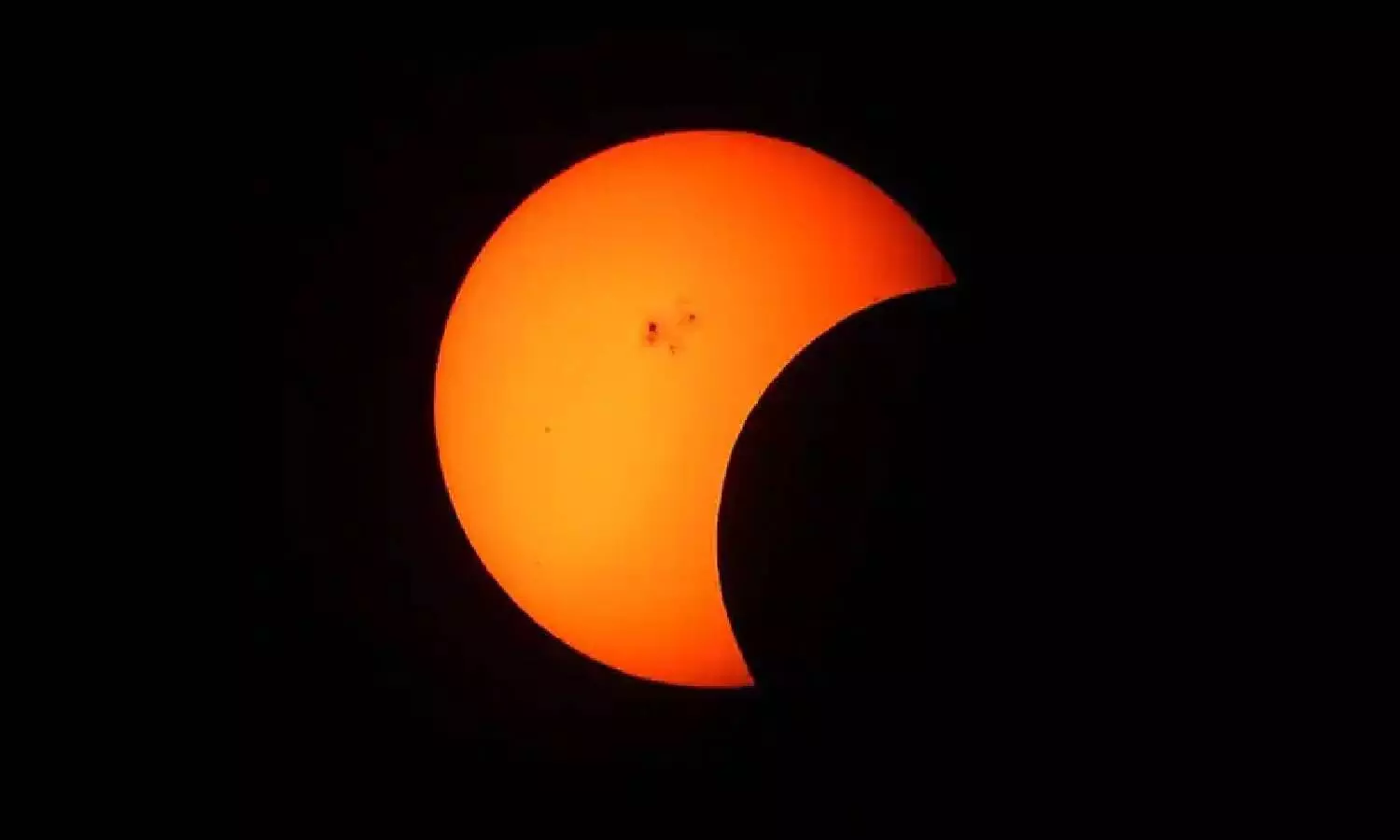Partial solar eclipse on 25 October: Here's where you can get the best view
In Delhi and Mumbai, the percentage of the sun covered by the moon at the time of the greatest eclipse will be around 44% and 24%, respectively.
By Newsmeter Network
Hyderabad: A partial solar eclipse will occur on 25 October 2022. In India, the eclipse will begin before sunset in the afternoon and will be seen from most places. However, the same cannot be seen from Andaman & Nicobar Islands and some parts of north-east India (Aizawl, Dibrugarh, Imphal, Itanagar, Kohima, Sibsagar, Silchar, Tamelong, etc.).
The ending of the eclipse will not be visible from India as it will be in progress after sunset.
Approximately 40 to 50% of the sun will be obscured by the moon at the time of the maximum eclipse in north-western parts of the country. In other parts of the country, the percentage coverage will be less than this.
In Delhi and Mumbai, the percentage of the sun covered by the moon at the time of the greatest eclipse will be around 44% and 24%, respectively. The duration of the eclipse, from the beginning to sunset, will be 1.13 hours in Delhi and 1.19 hours in Mumbai. In Chennai and Kolkata, the duration of the eclipse, from the beginning to sunset, will be 31 minutes and 12 minutes, respectively.
The eclipse will be visible in the region covering Europe, the Middle East, north-eastern parts of Africa, western Asia, the North Atlantic Ocean, and the North Indian Ocean.
The next solar eclipse will be visible from India on 2 August 2027. It will be a total solar eclipse. It will be seen as a partial solar eclipse from all parts of the country.
What is a solar eclipse?
A solar eclipse occurs on a new moon day when the moon comes in between the Earth and the sun and when all three are aligned. A partial solar eclipse will occur when the lunar disk covers the solar disk partially.
The eclipsed sun should not be viewed with the naked eye, even for a very short time. It will cause permanent damage to the eyes, leading to blindness. A safe technique to observe the solar eclipse is either by using a proper filter like aluminized Mylar, black polymer, welding glass of shade number 14, or by making a projection of the sun's image on a whiteboard by telescope.